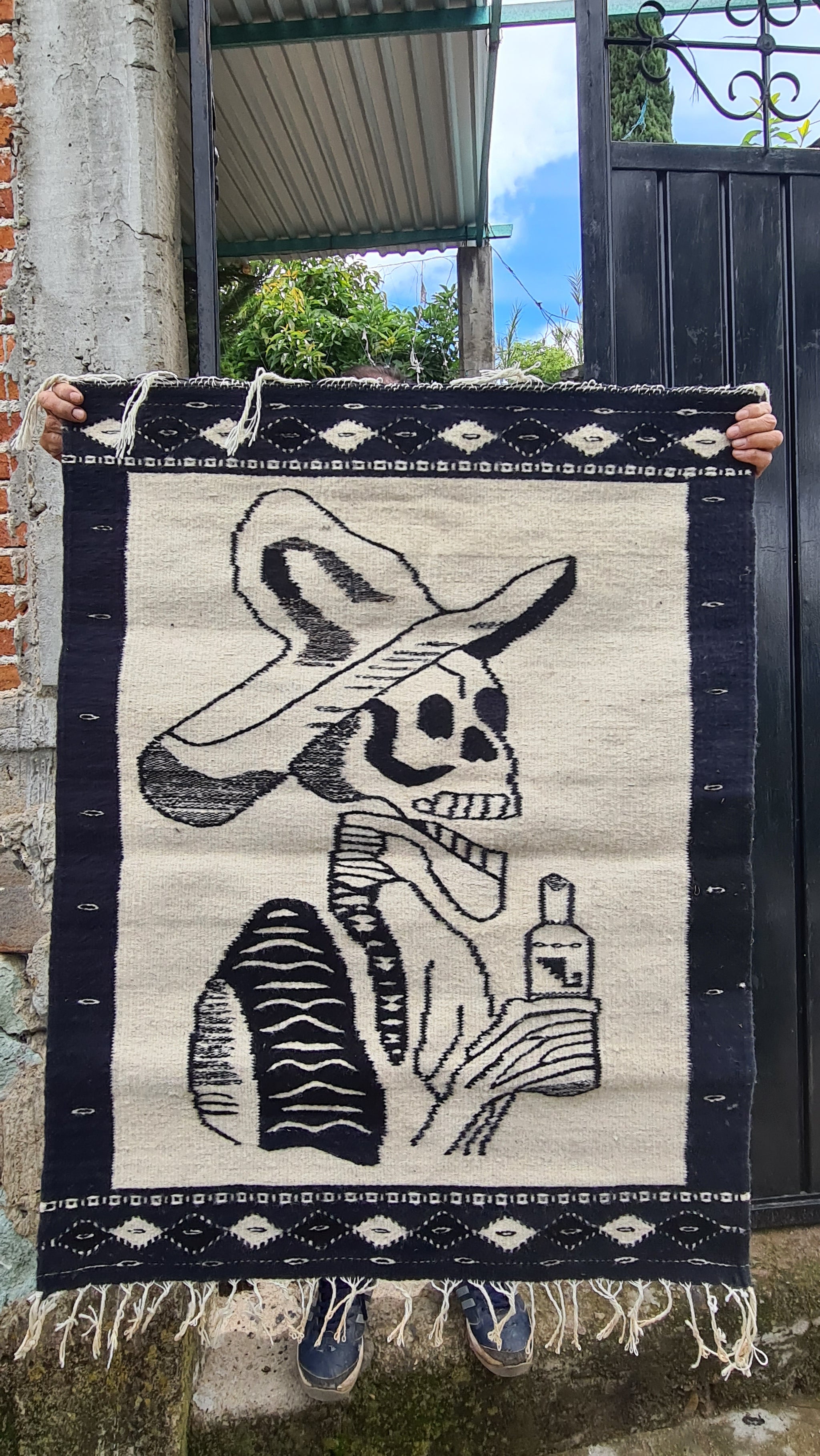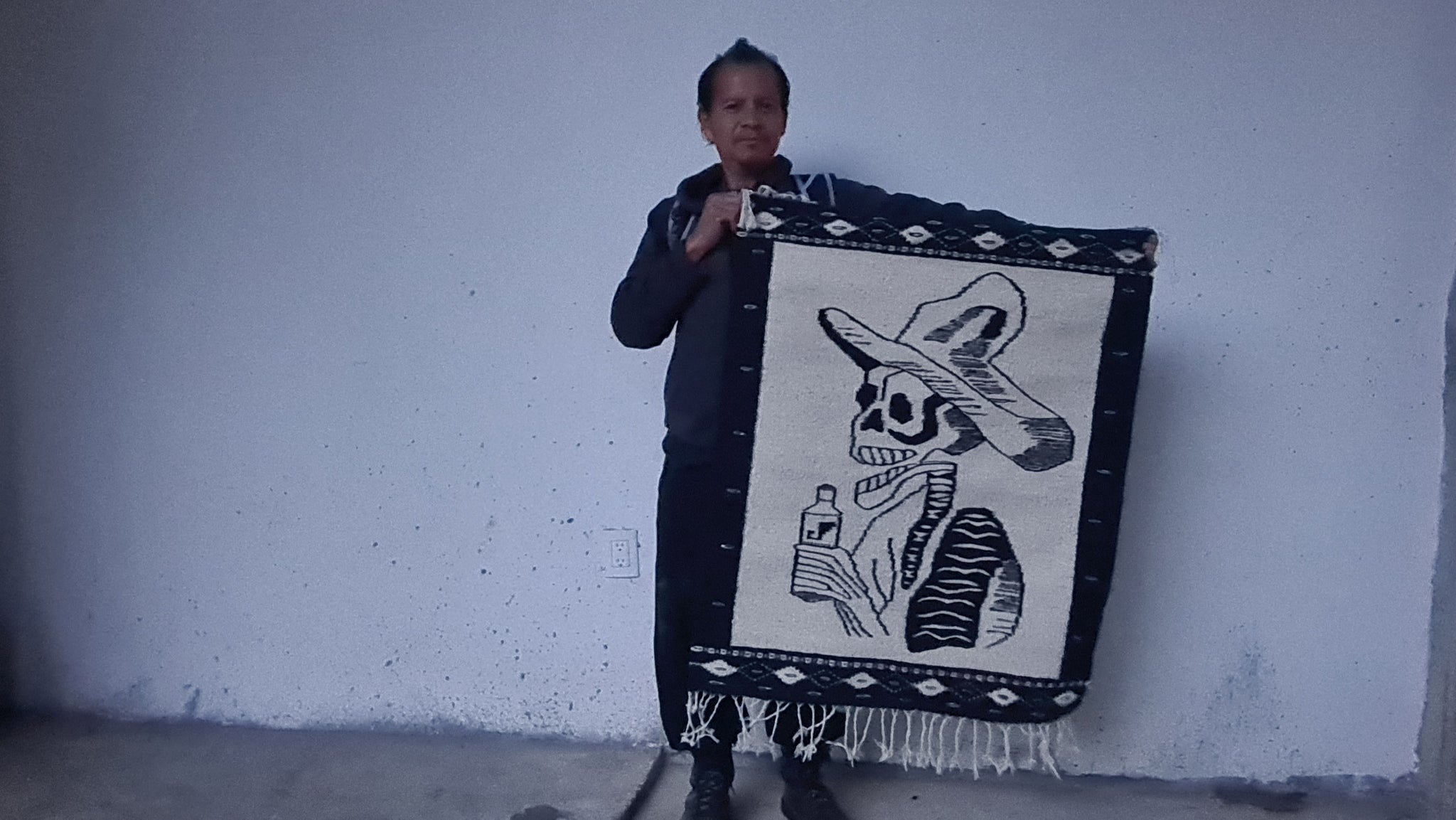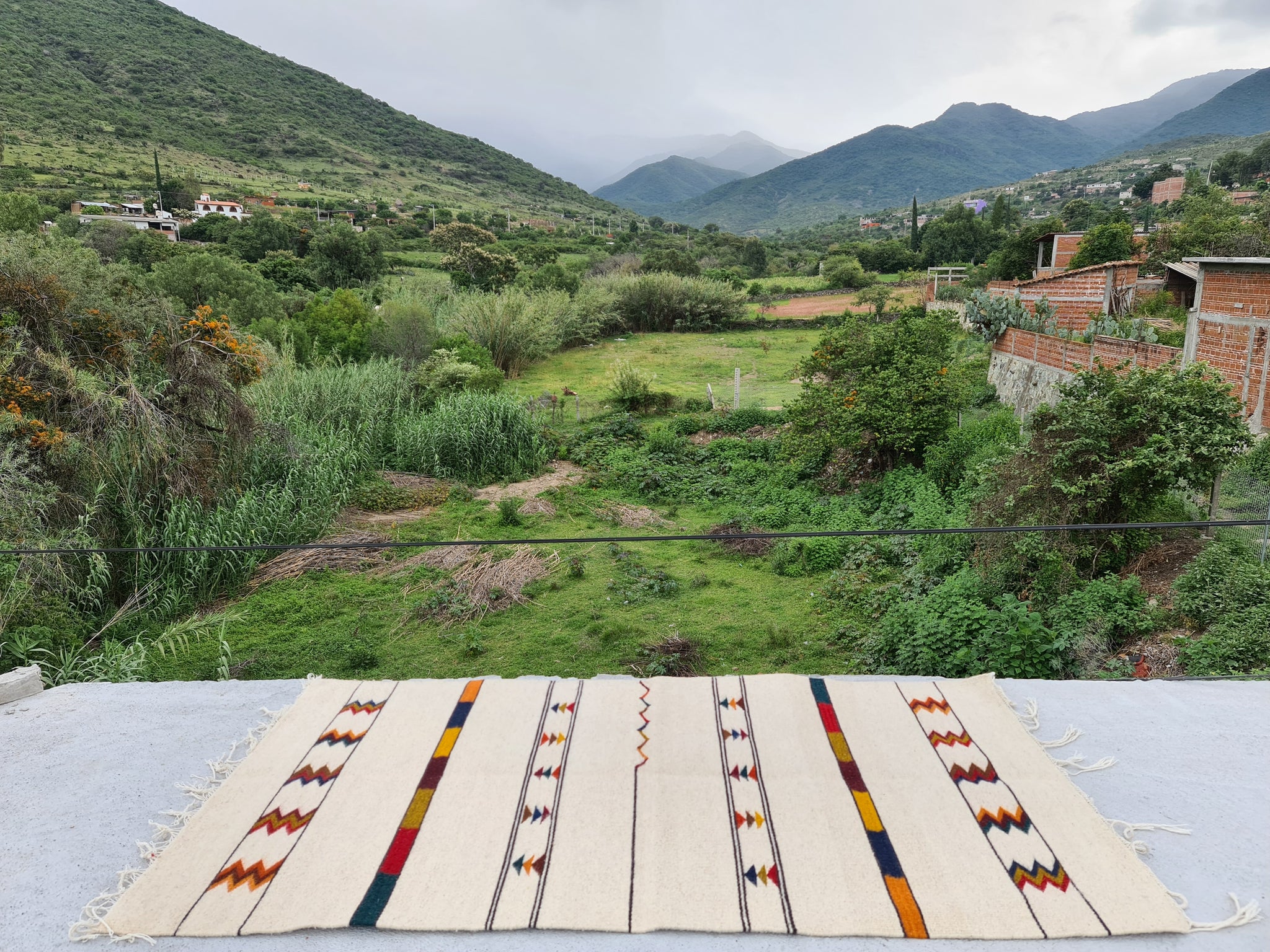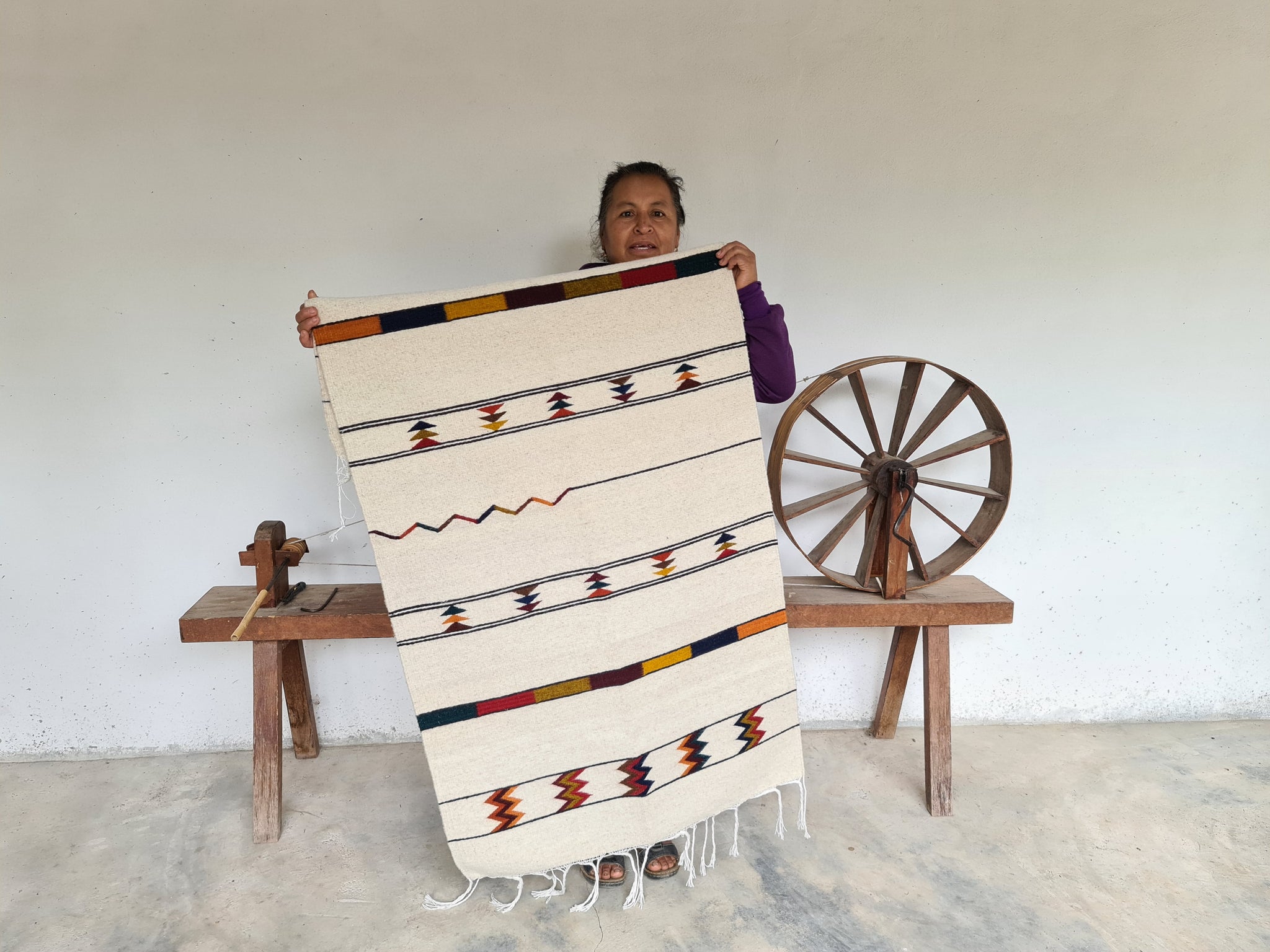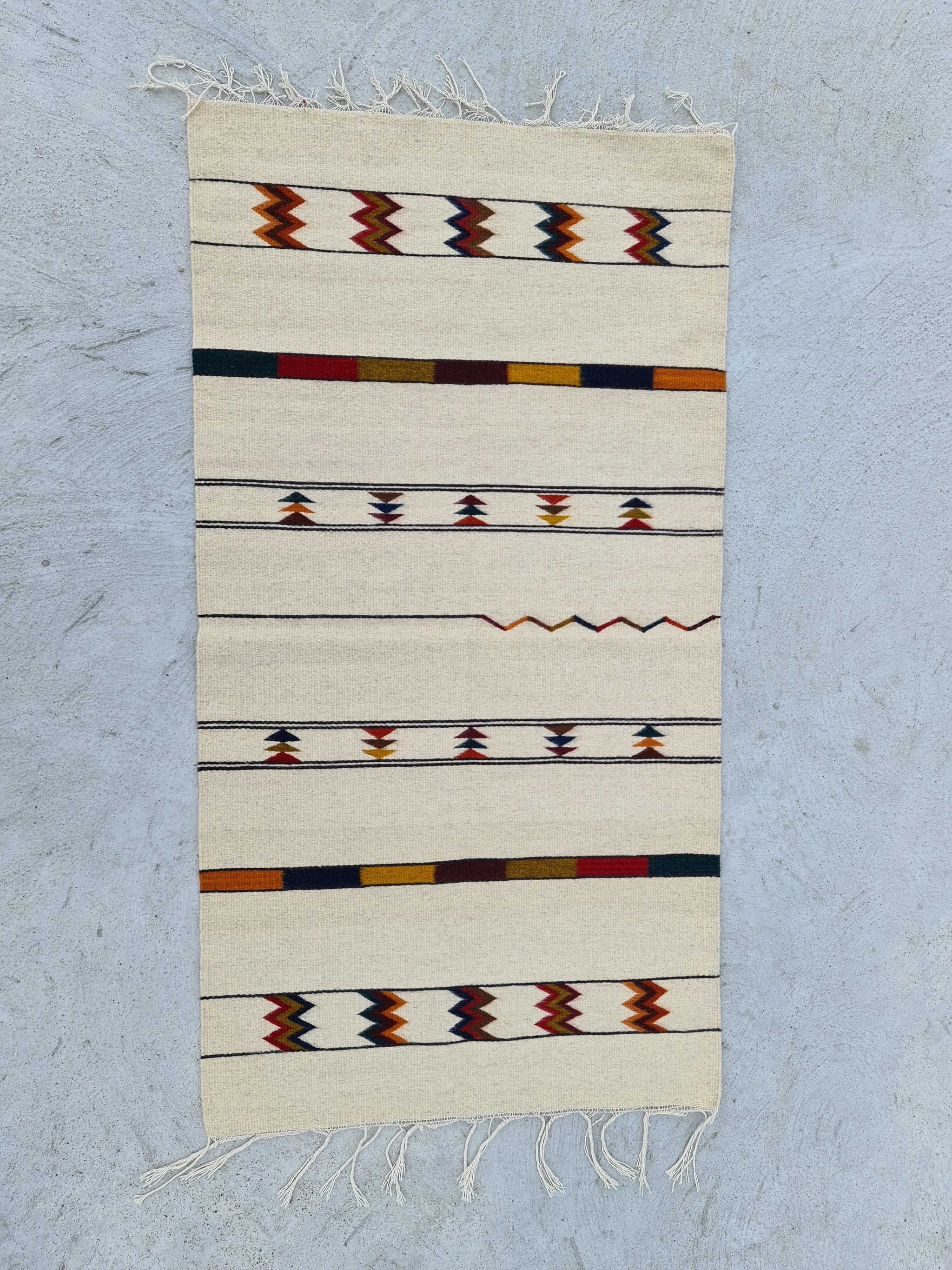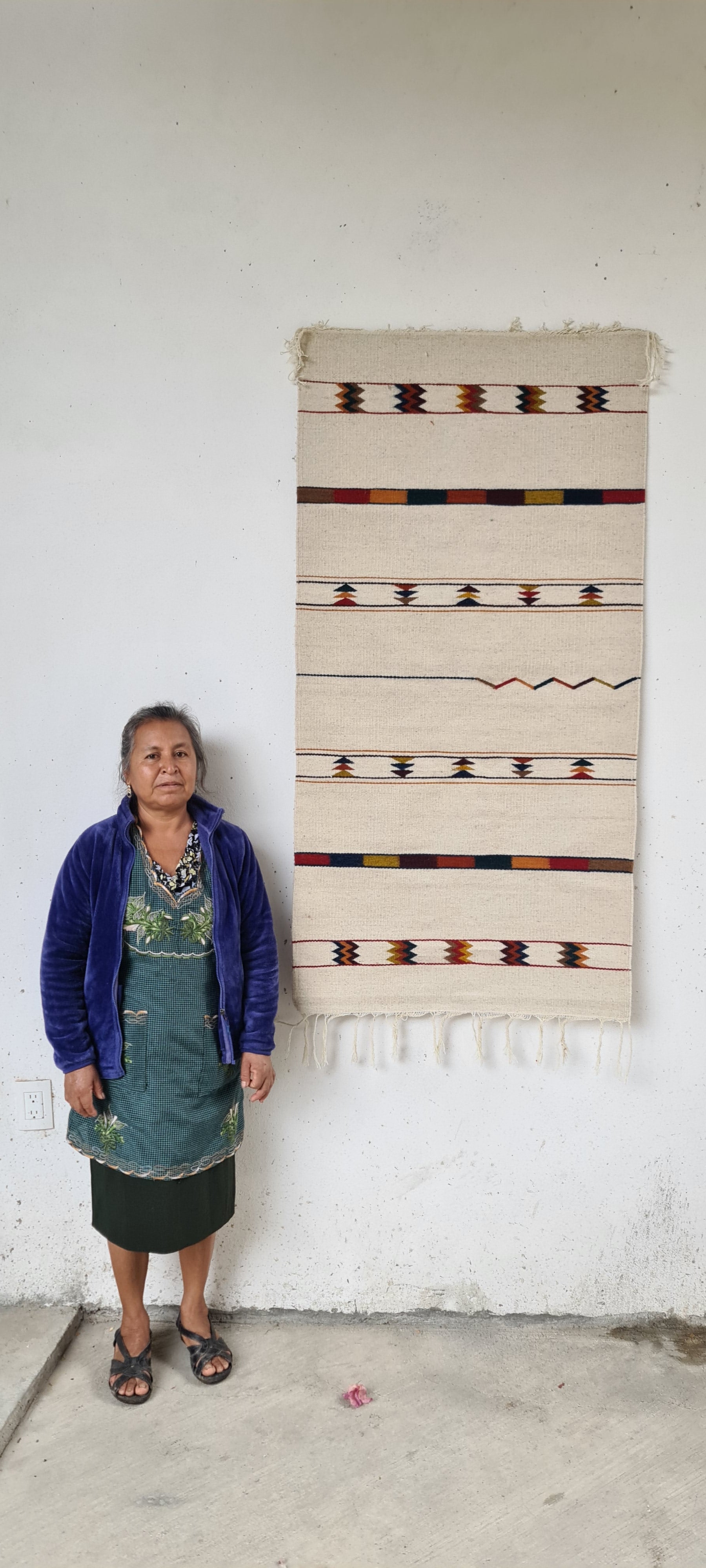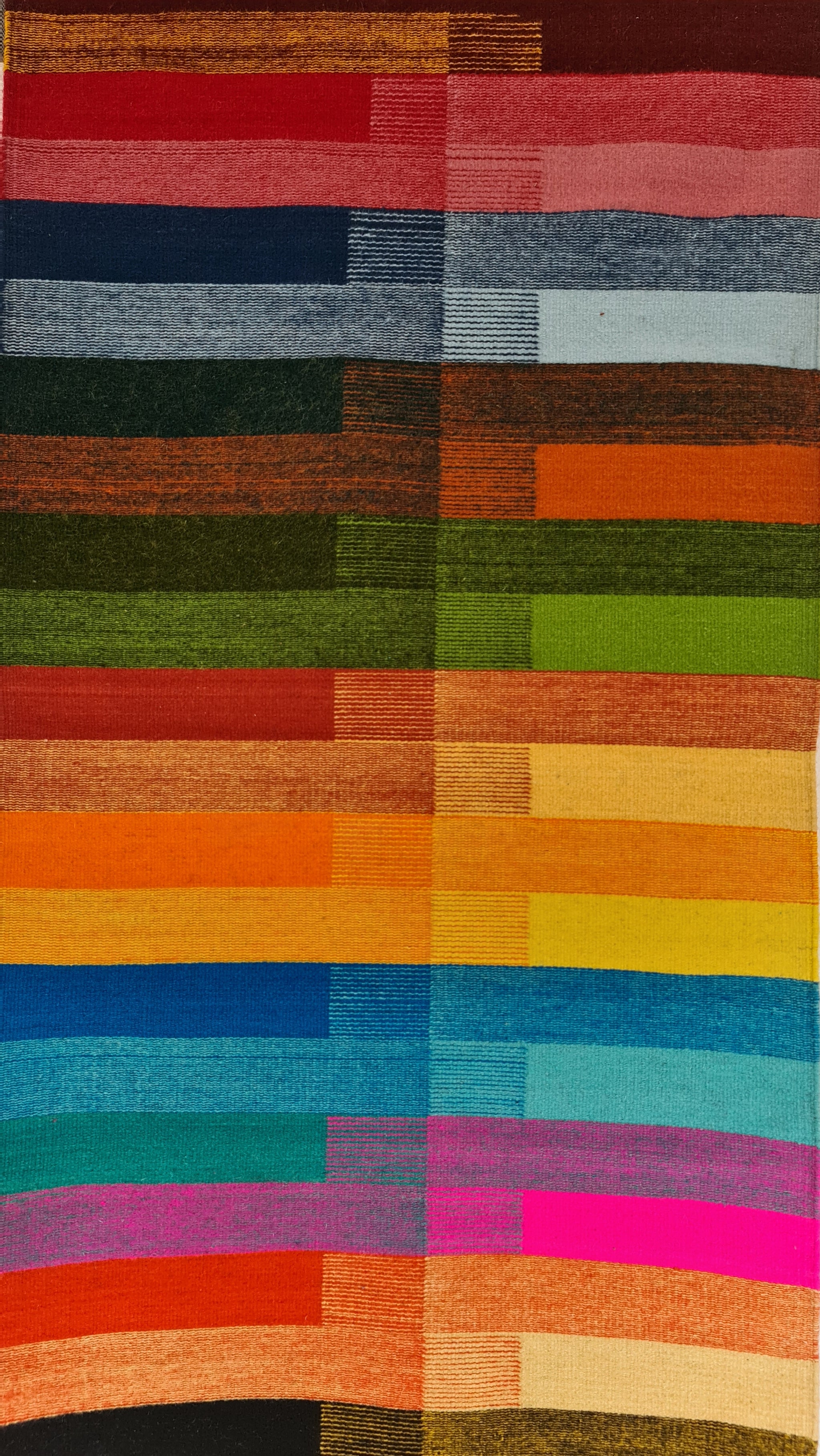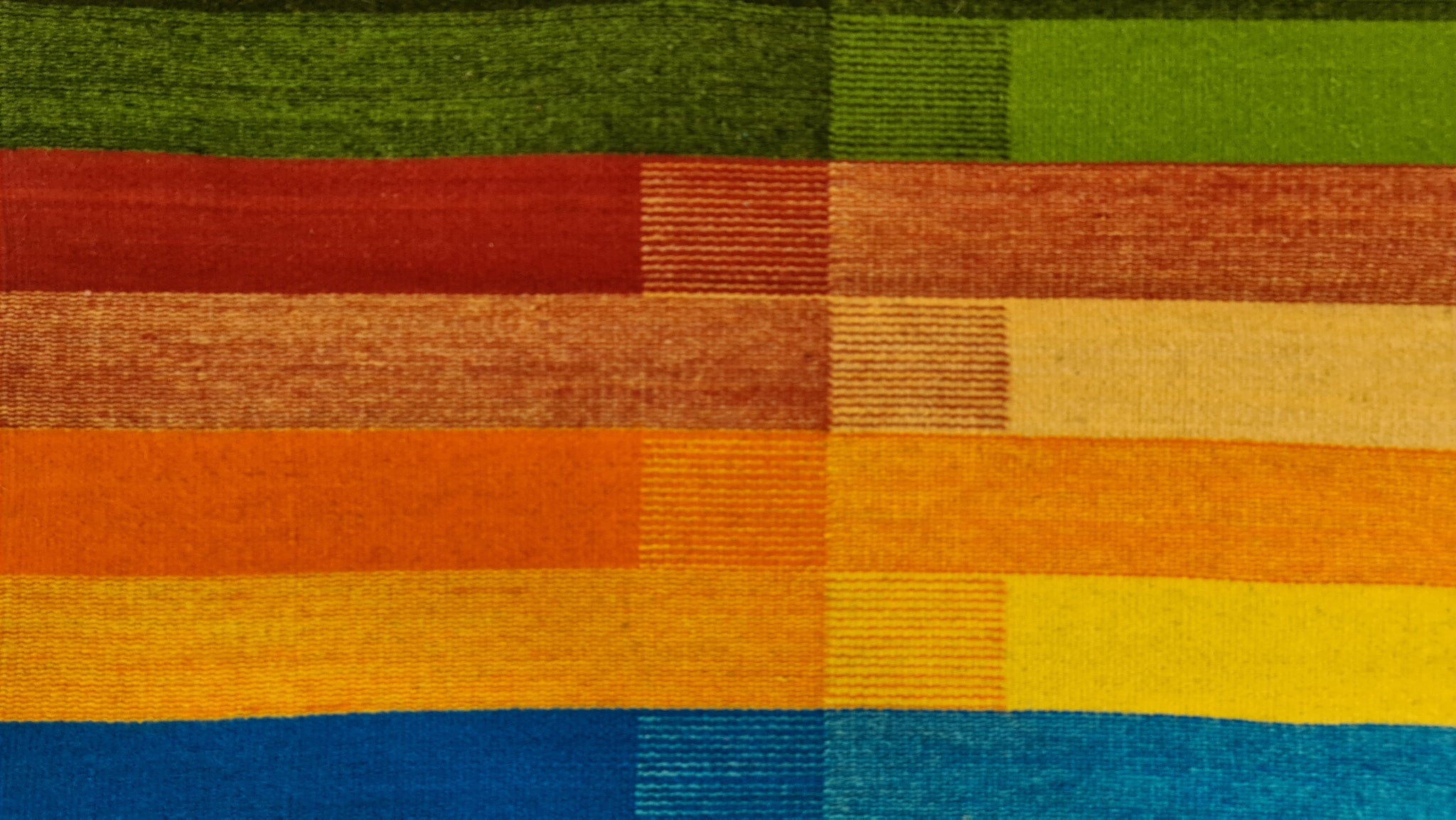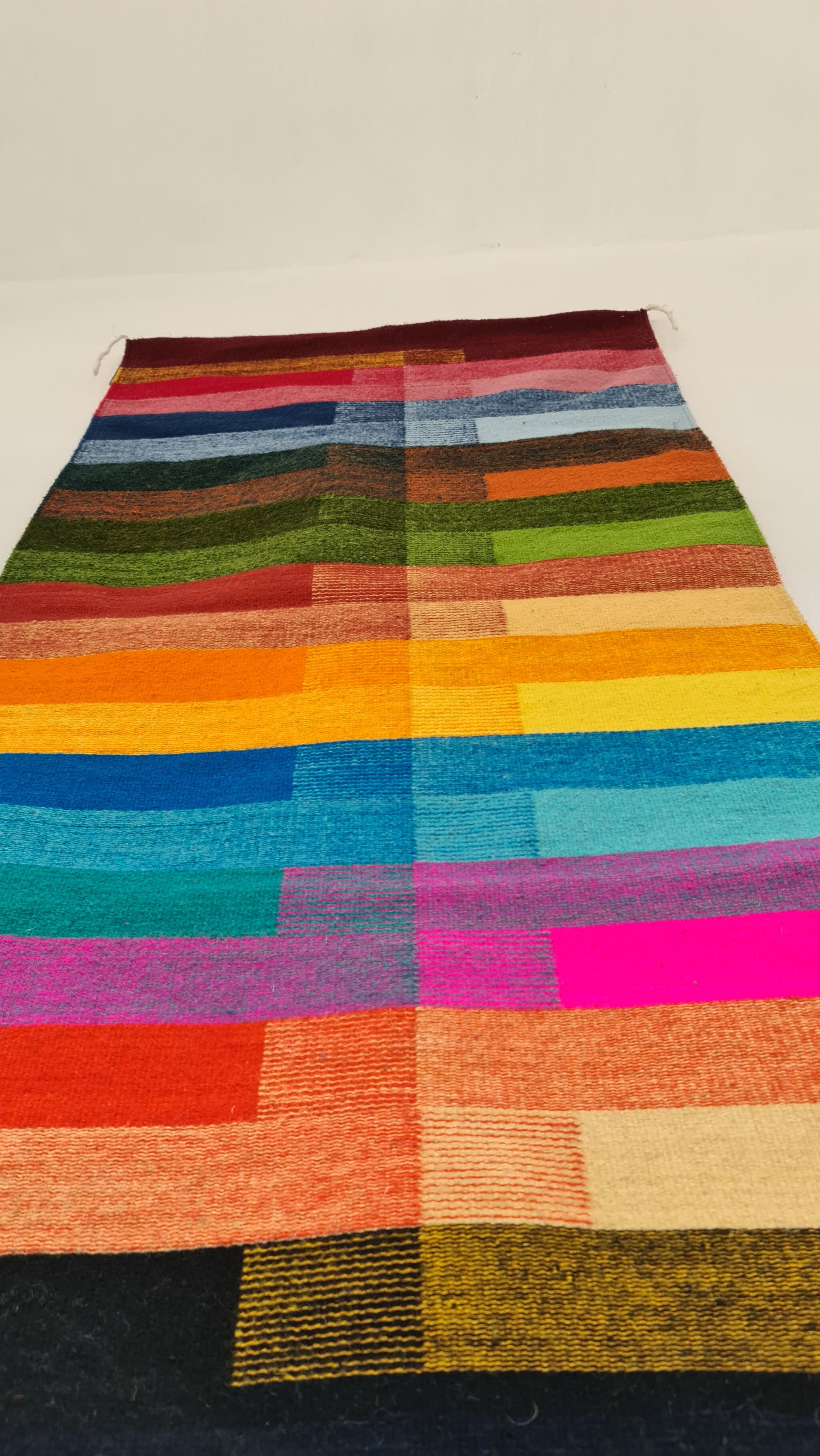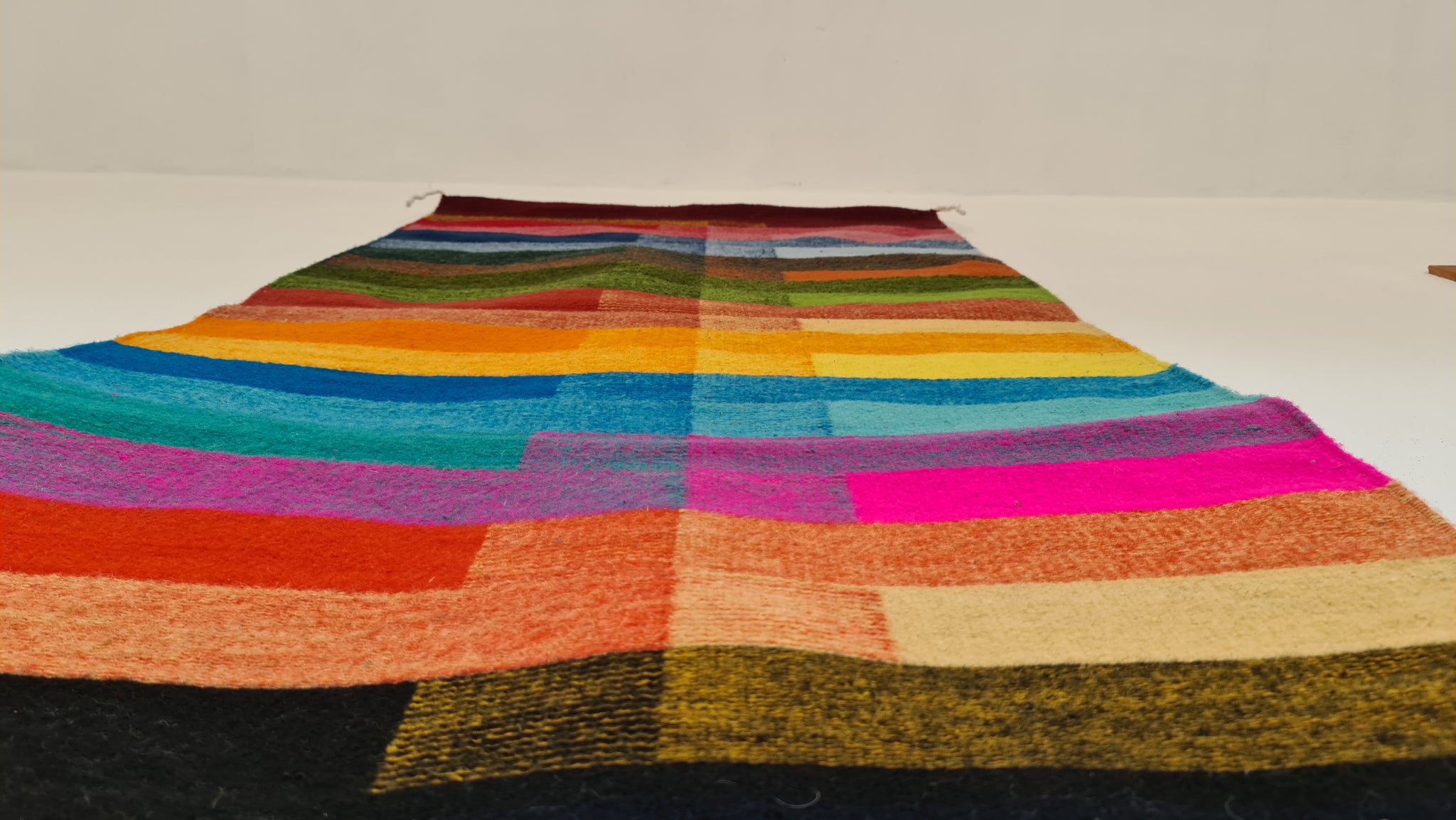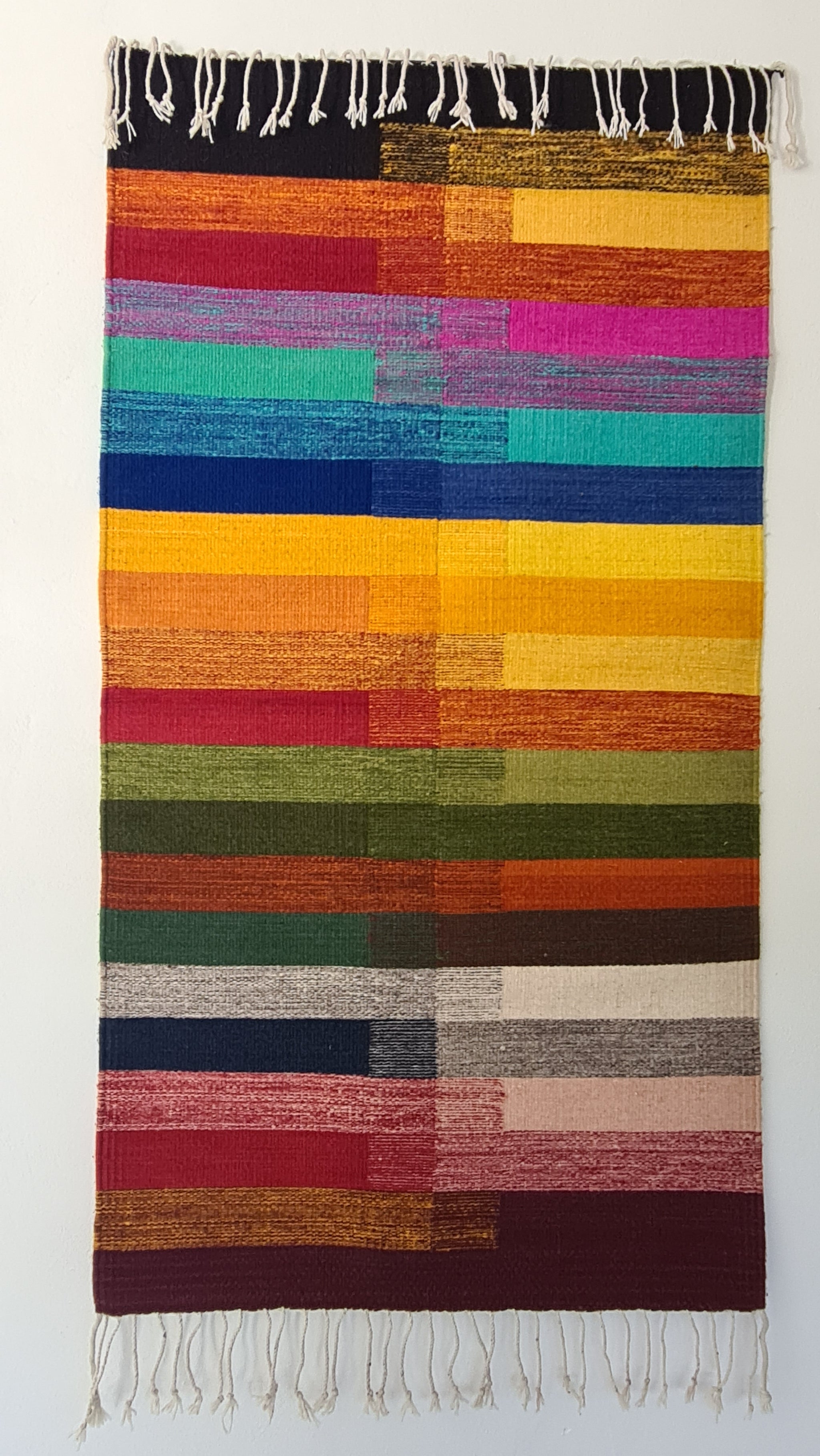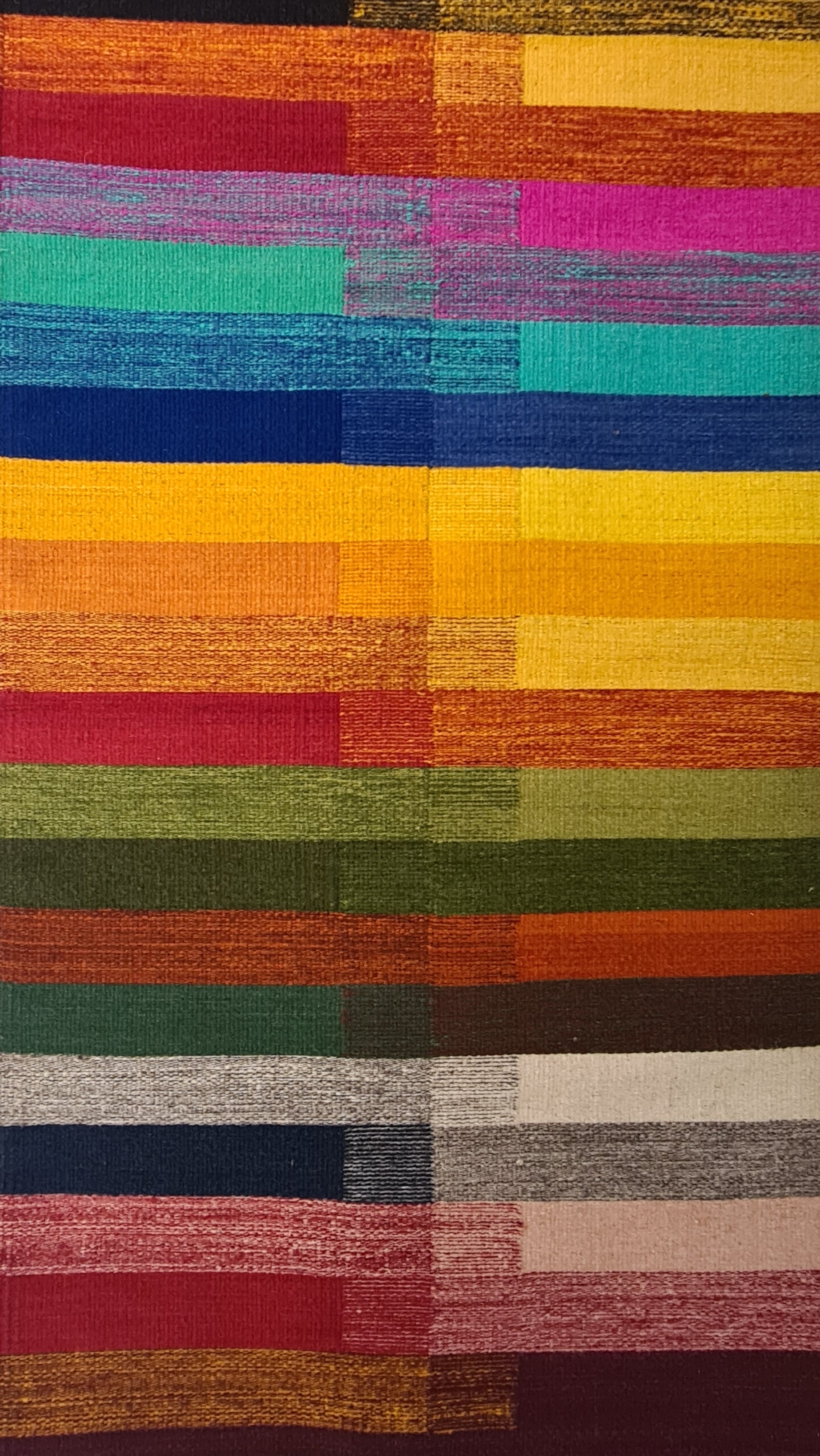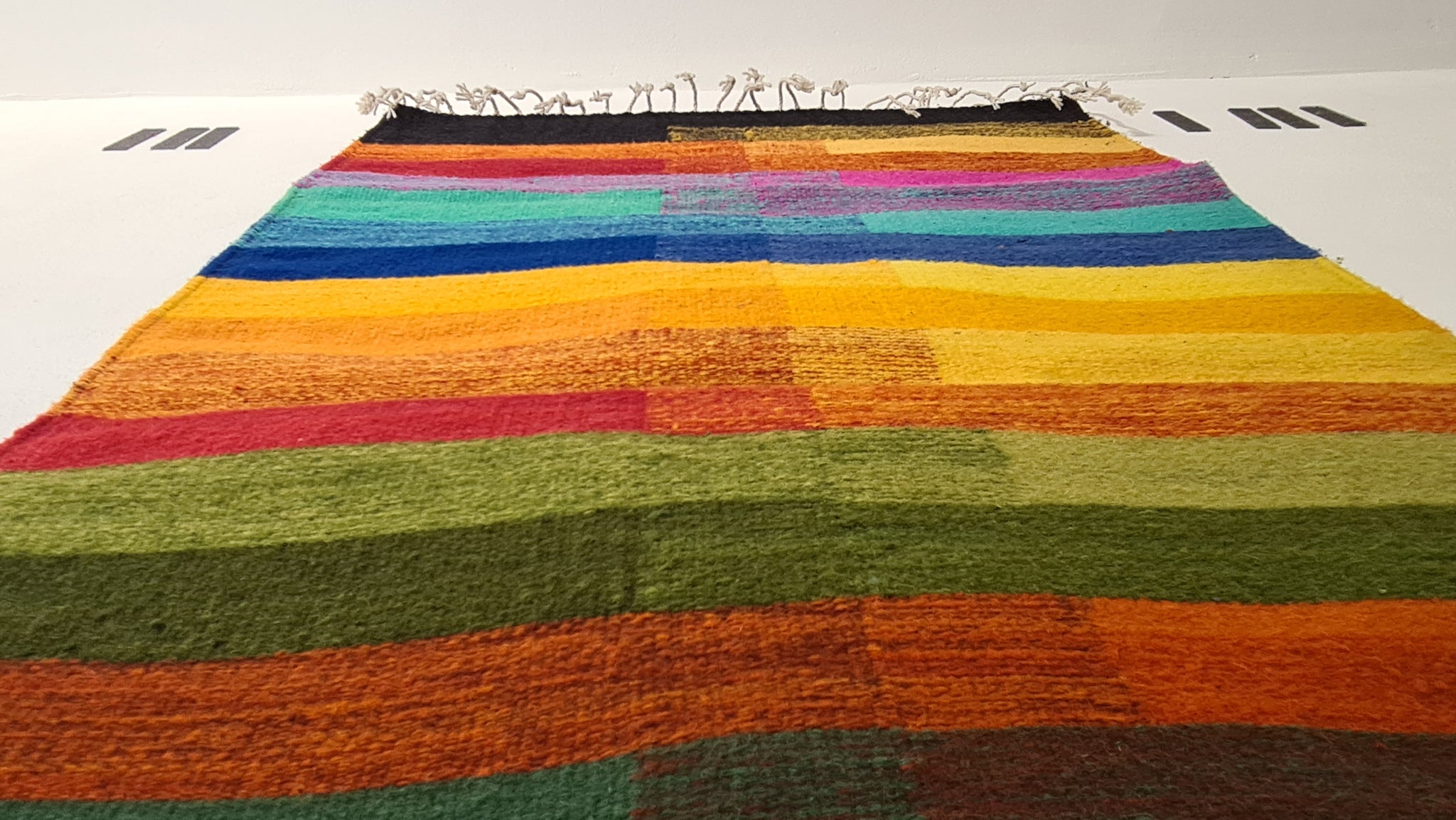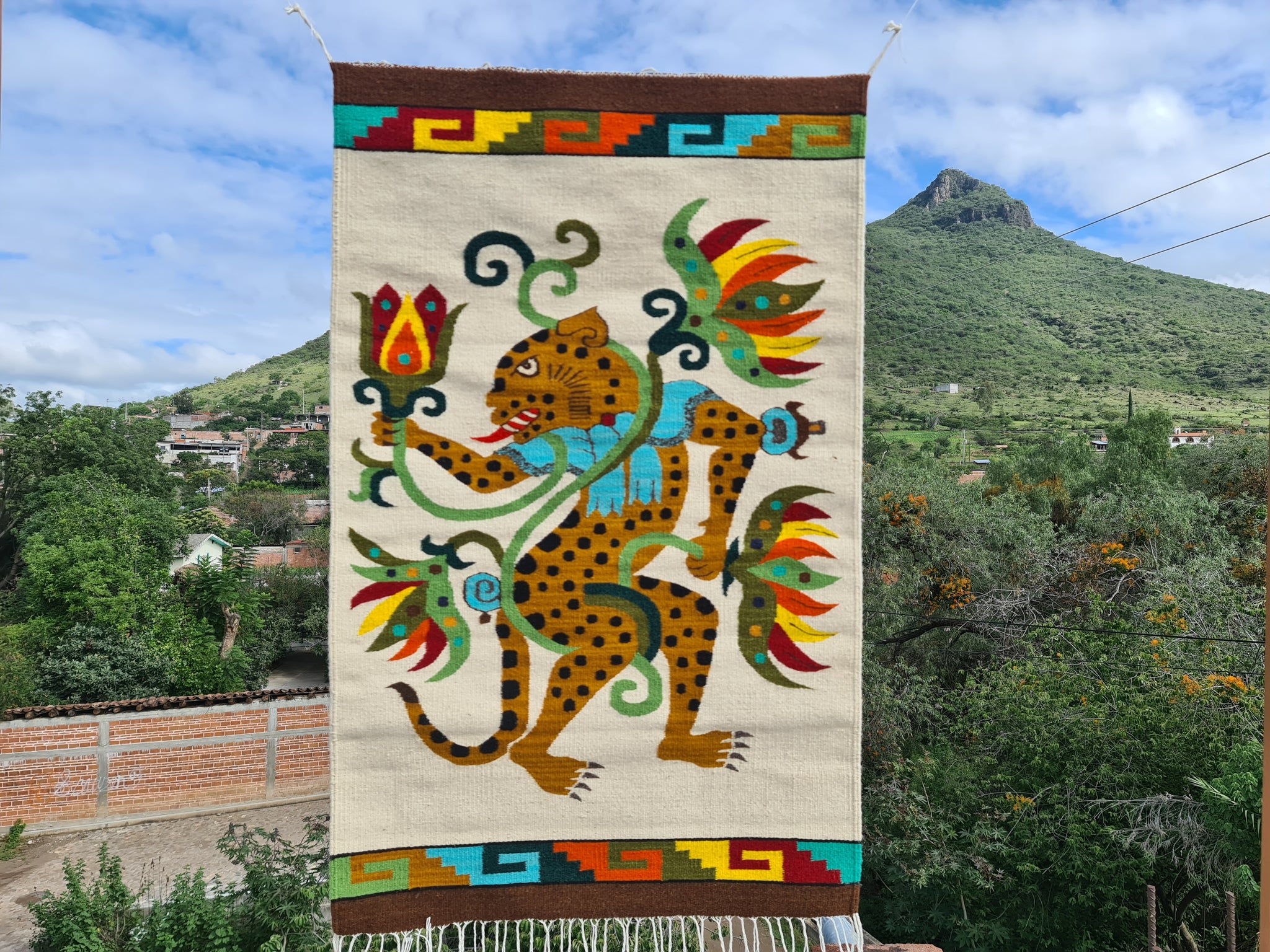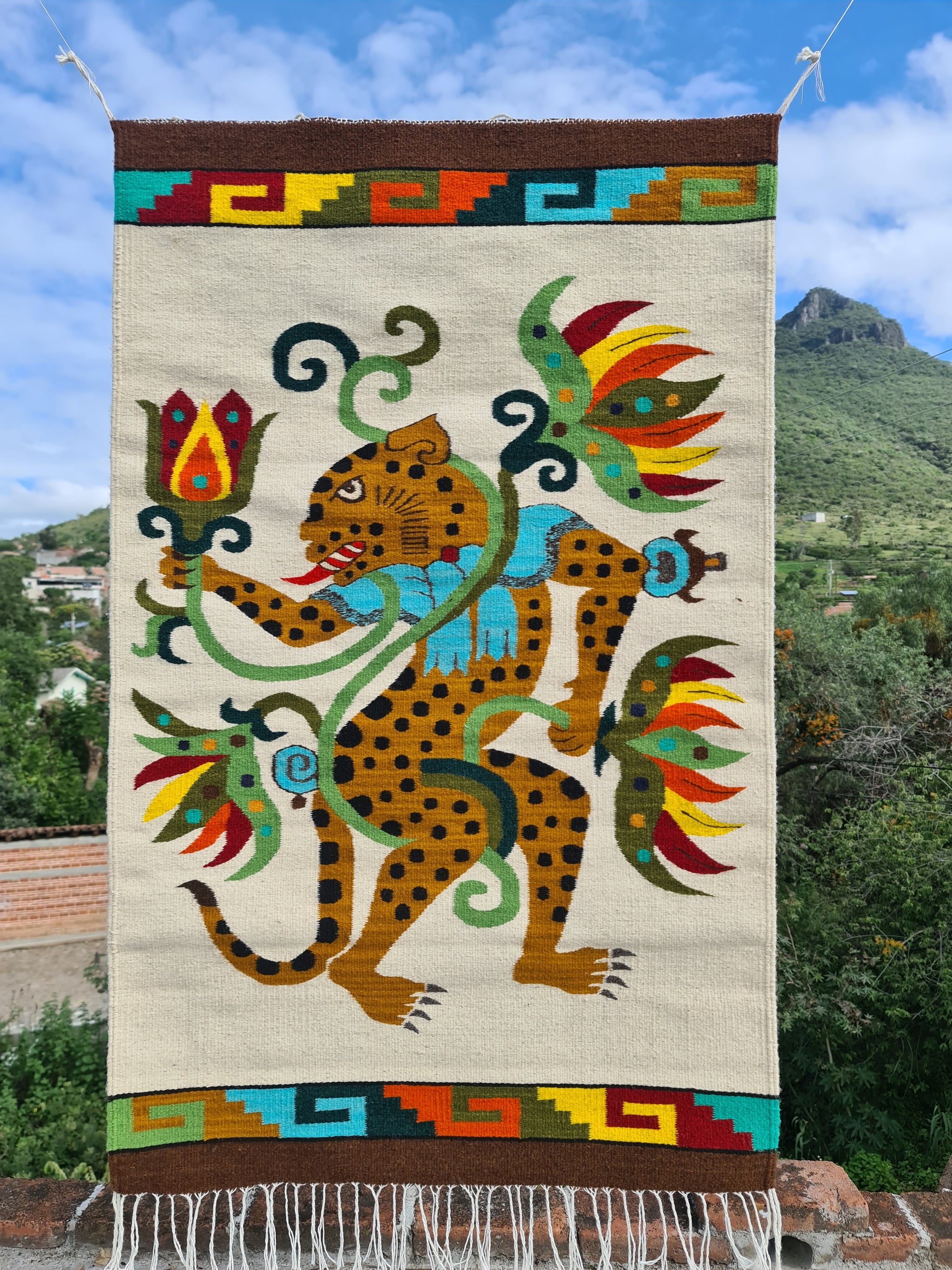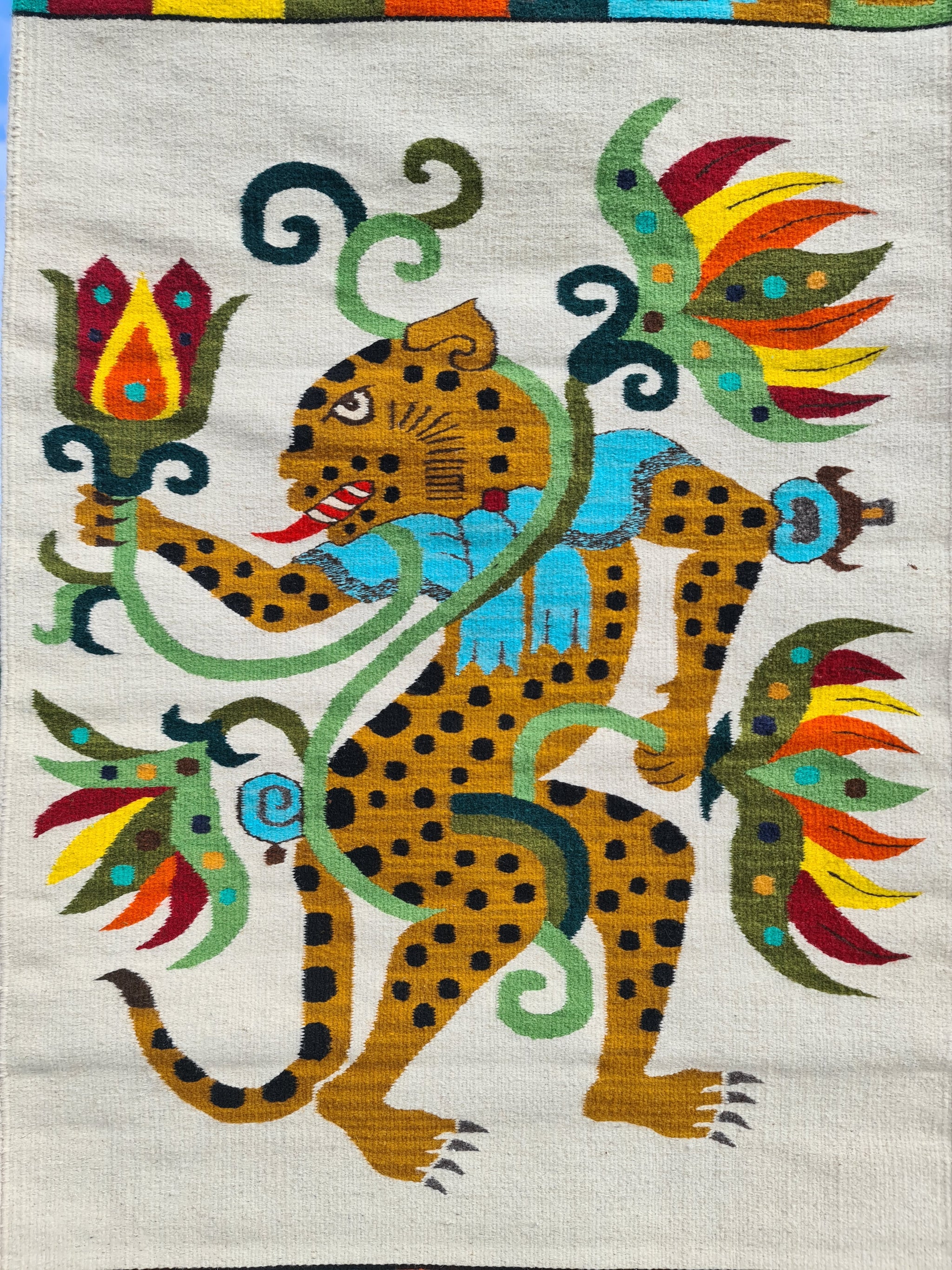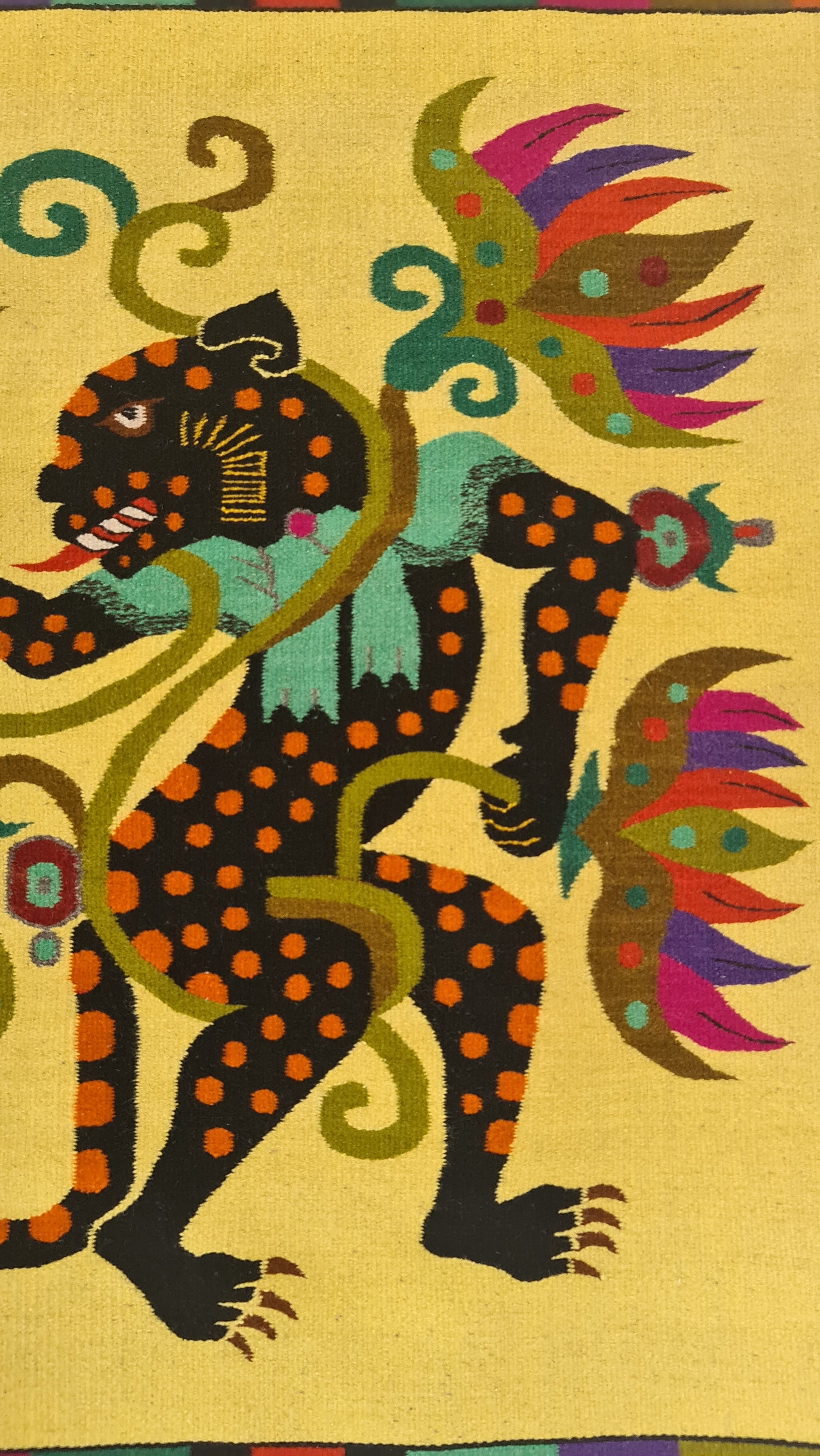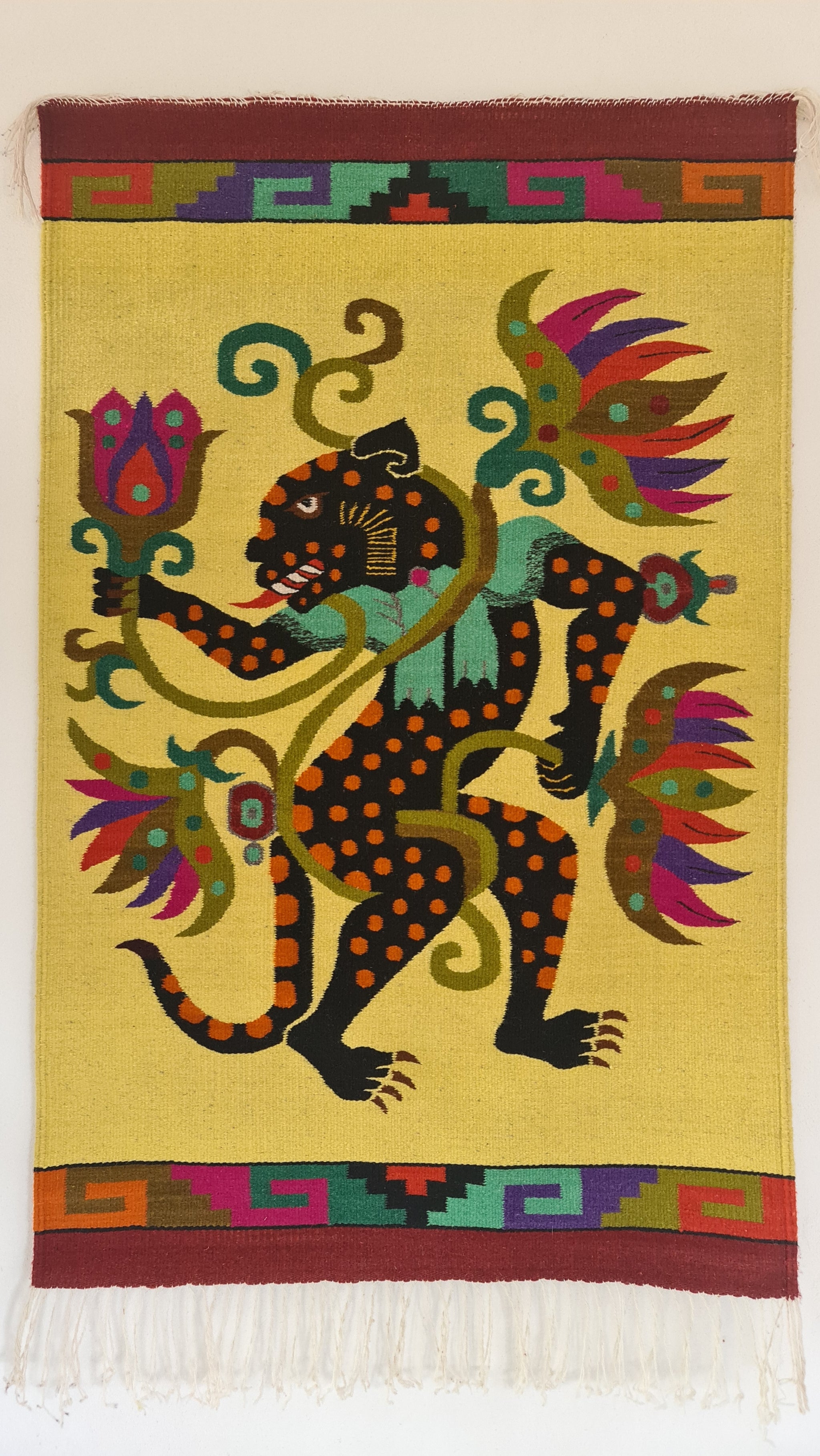Size: 90x100cm
Weaver: Beat Niea Llieæbeats
Price: $430USD. Checkout price shown in $MXN pesos.
Rug available as a pre-order.
Materials ans methods: criollo sheep wool hand dyed with colorfast aniline dyes using an exhaustive method. Handwoven on a Zapotec style loom of the 16th century adapted from European styles. Woven using a 7 threads per inch reed.
Design, Patterns and symbols.
This rug repurposes an ancestral art theme in which our ancestors represented death as Gods, a the ocasion for rituals and the daily aspects of life; because death is always present in life. The Calaveras of this style were made popular by the Cartoonist Jose Guadalupe posadas as part of a language that made political commentary against the regime of Porfirio Díaz and to analyse different aspects of society. The most popular Calavera is La Catrina, as baptized by Diego Rivera but originally known as La Calavera Garbancera, this calavera makes fun of Mexicans of the day that were trying to appear more European while ignoring their native heritage. Posada probably contributed to the stereotype of the drunk campesinos, ready to fight the revolution to defend their land without a second thought about risking their lives in unfavourable warfare; armed with a machete and other farm tools they were overthrowing more than 30 years of dictatorial style of government.
In a way, this drinking calavera does depicts aspects of the social psyche because for a long time our ancestors did not take part in the political or economical systems implemented with European values; our ancestors did not need to save up momney because they were self sufficient in most aspects of their daily lives. They grew their own food, and helped each other harvest their crops, build their homes and pay for weddings with the social institution of the Guelaguetza, Gaalgeæs, assurred mutual help for each other.
In the early days when money was circulated when the native folks earned it they would spend it right away in the simple pleasures of life because they knew all their other needs are covered.
This rug depicts the Calavera with a wide brimed hat of the early 1900's a sarape over its shoulders and a bottle of Mezcal with the warrior life cycle symbol woven on it. There are stripes of the smile pattern decorated with floating weft that makes it more like a skull smile. There is a stripe of the mountain pattern that when mirrored looks like a double strand of the DNA pattern with seeds of life woven in the middle of the valleys and at the beginning of the rug.
